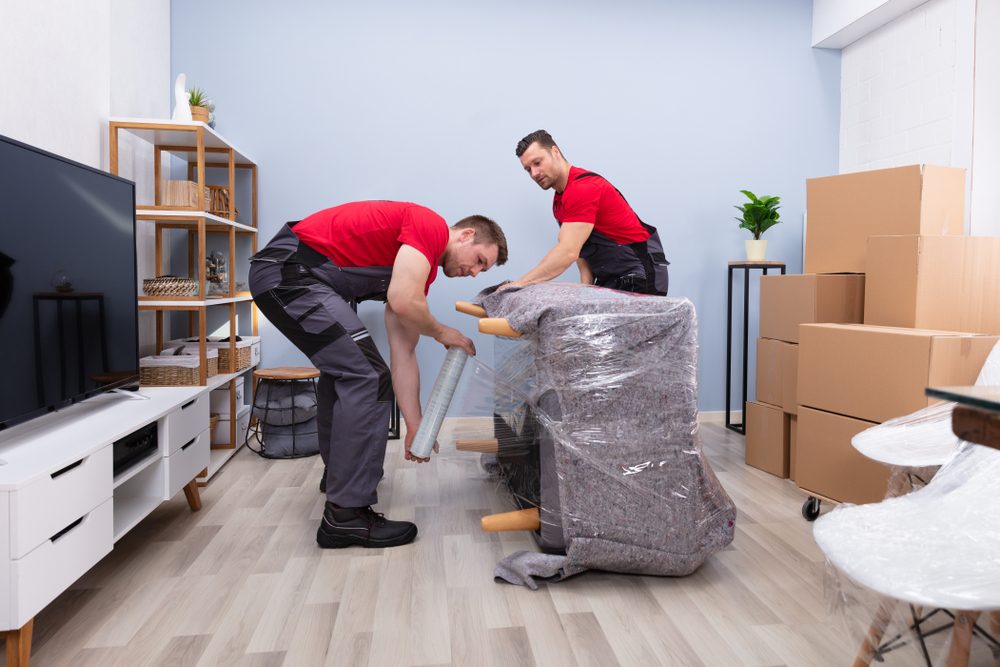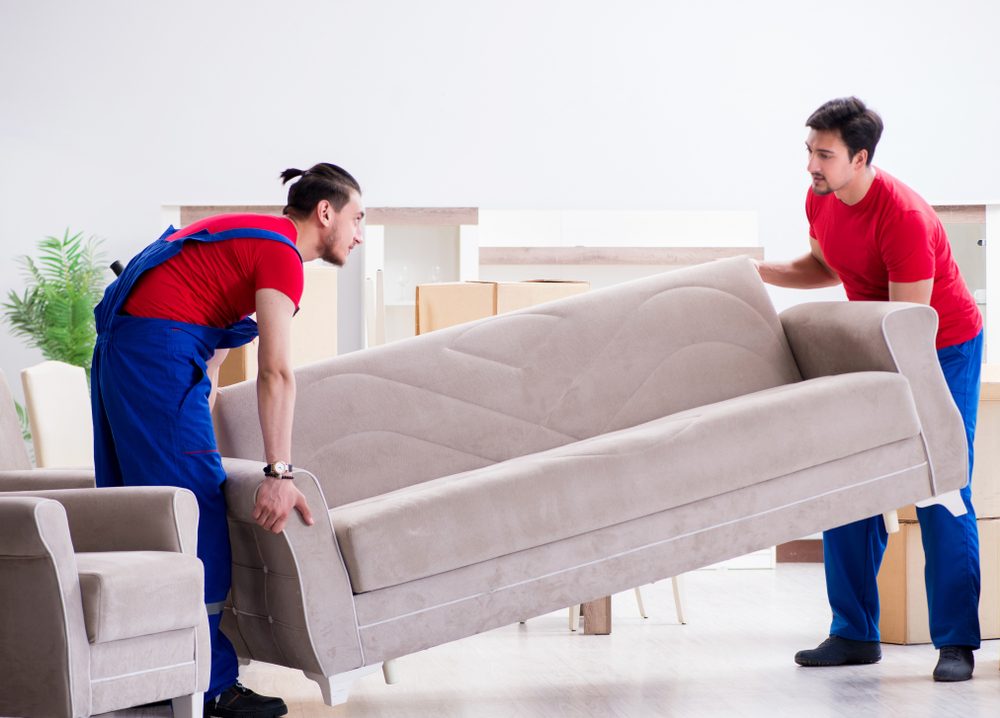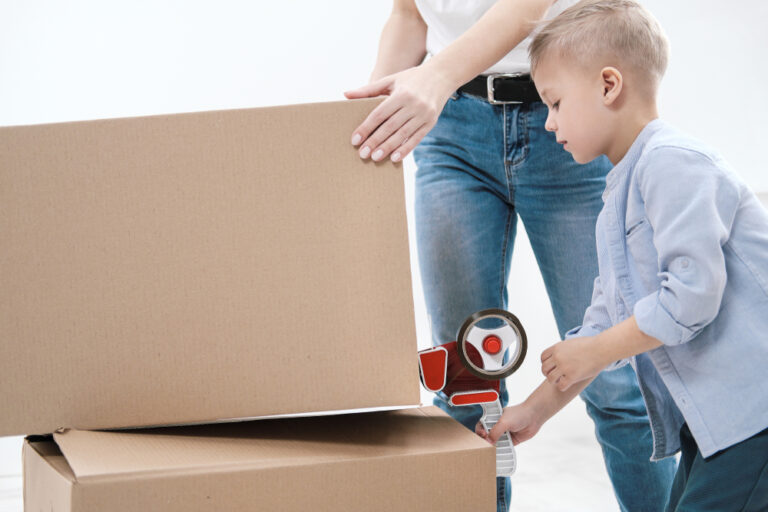The Key Packing Tips for When You Move Household Goods
Very few people will stay in a single location all their lives. Many Americans go through several grueling moving experiences by the time they reach their 30s. It’s almost like a rite of passage for many people, but it’s nothing if not unpleasant when not done correctly.
Of course, moving can lead to positive outcomes, like when people relocate to start a new, better job or live in a nicer part of the country. Yet the result isn’t enough to make people cheerful and excited throughout the whole experience.
One thing that can make moving easier: nailing the packing process. Armed with the key packing tips for when you move household goods, you can make your next move less stressful and more exciting.

Pack Ahead of Time
If you want to pack your belongings before moving household items with a moving company, it’s best to prepare in advance. Packing is a long and often stressful process. The more things you take with you, the more supplies and time you need to set everything up for pickup.
Don’t make packing a last-minute activity. Household items movers are punctual and operate on predefined schedules. Wasting time packing while the truck is parked outside belongings can sidetrack other deliveries, including your own.
Declutter Your Home
A household goods moving company will ship anything except hazardous materials and perhaps firearms when crossing specific state lines. But should you take everything with you when moving?
Many people end up with possessions they don’t need or use. Some hold on to broken appliances, clothing that doesn’t fit, and so on. Before you contact household good shipping companies and ask for quotes, you might want to declutter your home.
Figure out what you need and what you can leave behind or throw away. This way, you’ll spend less money on packing supplies and free up time to deal with other aspects of your move.
Moreover, shipping fewer items will bring down the cargo weight. This means that home goods movers will charge less for their services.
Work With Local Companies
Maybe your state doesn’t have the best moving company in the U.S. Does that mean you should go out of state for your household good shipping needs? No, you shouldn’t.

Local transport can be a lot cheaper because the movers won’t have to travel hundreds or thousands of miles to make a pickup. While cargo weight is a significant factor in quotes, distance also matters. Besides, coordinating with local household items movers is easier, especially when you need packing guidance and assistance.
Buy the Proper Supplies
Packing furniture, valuables, appliances, and other household goods is part art and part science. Companies that provide intrastate and interstate household goods moving services know how to pack. They have access to high-quality supplies and use tried and tested techniques.
But if you want to turn packing into a DIY job before hiring household goods shifting services, at least get good supplies.
Bubble wrap is your best friend because it can protect many fragile items. Wrapping blankets can be better than foil or regular blankets because they can prevent wooden furniture from being scratched.
Plastic wrap is another excellent solution and helps keep items dust-free during transportation and in temporary or long-term storage.
You might also want to stock up on zip-lock bags to store furniture hardware, labels to affix to boxes to identify contents inside boxes, and markers to mark fragile cargo. And if you don’t mind splurging, you can buy transport crates. They’re stronger than regular cardboard boxes and arguably better for transporting items vertically, like paintings, mirrors, etc. Lastly, Styrofoam pellets are great for filling up empty spaces in your boxes and preventing your belongings from banging against each other.
Take It One Room at a Time
Trying to mix and match items by categories can overwhelm you. Instead, try packing rooms individually. Once you finish one room, you can move on to the next.
This will create less chaos in your home. And if you’re packing well in advance of the move, having your home still livable is comforting. Furthermore, you can save the kitchen and bathroom for last. This way, you don’t have to deprive yourself of anything essential until the day you move.
As a bonus, the room-packing approach will help household items movers unload everything in its appropriate place in your new home. You’ll also have an easier time unboxing and sorting out your items later.

Get Professional Assistance From Home Goods Shifting Companies
Let’s face it. Not everyone has the time or patience to manage packing.
But moving household items isn’t the only service provided by professional moving companies. Some offer complete packing services.
Depending on the number of items, their size, and weight, experienced packers can load everything onto a truck in a few hours or half a day. It will cost extra, and you should be present to oversee everything.
That said, you won’t have to worry about anything until moving day. You can go about your daily routines as usual and enjoy not stressing about what boxes to get or what furniture to disassemble.
Disassemble Furniture
Home goods transport services can haul large items of various sizes. But that doesn’t mean you shouldn’t try to maximize trailer space. Making two or more trips instead of one will double or triple your expenses. On top of that, you may have to wait even longer to get everything delivered. There’s no guarantee a company can spare three vans or trucks to accommodate a single job.
It’s even less likely to be a smooth move if you agree on a single shipment, but your poor packing skills create last-minute complications.
One of the first steps to maximizing trailer space is disassembling furniture. Many tables, cabinets, and even beds are made from multiple components and held together by hardware. Unscrewing the nuts and bolts, removing doors from cabinets, and packing furniture feet separately will help.
This practice can optimize the loading procedure and make it easier to stack certain household goods and appliances. Furthermore, it’s essential to keep items protected.
Think about it. There won’t be things swinging around wildly during a long haul if the doors, windows, accessories, and other components aren’t still attached. In addition, movers can strap and secure your cargo so that potholes, high speeds, and narrow curbs won’t make things move around in the back of the trailer.
That’s why it’s best to leave as few movable components attached to your furniture as possible.
Stack Items Correctly
One of the most important rules to follow when stuffing boxes before you move household goods is that heavy items go on the bottom, and light ones go on top. It makes carrying the boxes to and from the moving truck easier and keeps everything protected during transport.
Other good habits include packing paintings and mirrors vertically and using climate-controlled storage solutions for sensitive items.
Take Pictures and Label Everything
Before and after pictures aren’t only for promoting exercises and fitness routines. These pictures lay the foundation of a potential insurance claim. A big part of packing household items is all about documenting the process and the condition of your belongings.
A picture tells a thousand words and makes damages caused by movers hard to dispute by insurance investigators and moving companies.
Additionally, labels are crucial. Movers operating local transport for house shifting can’t always tell what they’re carrying unless the boxes have labels. This is especially true when you do the packing instead of the moving company.
Thus, you can’t always fault movers for damaging fragile items if they’re not labeled as “Fragile.” Put labels or write on the boxes with a marker. Let the moving team know exactly what it’s dealing with when picking up a box or crate.
Excess Clothes Can Protect Your Items
Styrofoam packing pellets are great if you can get some. But you don’t have to pay too much for packing supplies. If you have extra clothes or pieces of fabric you don’t know what to do with, stuffing them in boxes with fragile items works great.
You never want too much empty space in boxes, particularly when moving antiques, fragile items, or valuable furniture pieces and appliances. Fill out the empty space with whatever plush or soft materials you create stability and extra cushioning.
X Marks the Mirror
No matter how professional the household goods movers are, a lot can go wrong when transporting mirrors. They’re big, heavy, yet fragile at the same time.
Wrapping mirrors in blankets, towels, and bubble wrap can help. But if something goes wrong, you’ll want to minimize glass spillage.
The easiest trick to do this is to trace a large X with masking tape on the mirror. It can help keep the glass in place even if it cracks. You might want to do the same for large, framed pictures, cabinet window doors, and other similar items.
Dishes Travel Vertically
Dishes, glasses, and other kitchen items are among the most fragile things you can ship. So, like paintings and mirrors, dishes should never travel flat. It’s best to use extra padding between them, even if you might need a bigger box.
Wrapping them multiple times in protective materials is essential for safe transportation. This is where you can use additional wrapping paper and bubble wrap.

Clean Before Wrapping
Some items won’t be affected by a few dust particles during a long haul or sitting in temporary storage. However, wooden furniture, accent pieces, picture frames, and others don’t handle dust well.
Packing wooden items requires tight wrapping. But putting wrapping material over a dusty surface will cause the dust particles to rub against the surface as the item is transported all the way to your new home. This can cause discoloration and noticeable marks or scratches.
Always clean your furniture and wipe it dry. Only then it is safe to wrap it in plastic wrap, bubble wrap, packing paper, or moving blankets.
If you want to do an even better job, use plastic wrap first. It sticks easily to wooden surfaces and prevents dust from settling. As a bonus, it doesn’t scratch as some wool blankets might.
Don’t Pack Your Essentials
Everyone needs their everyday essentials. While it’s tempting to pack them with everything else when relocating, keep in mind that unboxing takes time. If you have jet lag and don’t synchronize your arrival with the moving company’s delivery, digging through boxes for your essentials could be the last thing you want to do.
Here are some items you shouldn’t ship but keep with you instead.
- IDs and paperwork
- Medication
- Toothbrushes and other hygiene items
- Phone chargers or personal laptop
- Toys for kids if moving with young ones
- Toys for pets if traveling with pets
Nothing you might need quick access to should be at the bottom of a box in a moving truck.
Pack an Overnight Bag
You might think you can travel light, especially when moving only a few hours away. After all, the moving company gave you an estimated delivery time.
But a lot can happen on the road that isn’t the moving company’s fault. Household items movers can get into accidents. They can run into unexpected roadblocks or experience harsh weather conditions. Delays aren’t uncommon.
Now imagine yourself in your new home and everything else you own sitting in the back of a truck somewhere for whatever reason. What if the truck is delayed for more than a day?
Having an overnight bag with a change of clothes, a couple of snacks, and something to keep you busy is the answer. You can take some comfort items with you to avoid feeling stranded.
Dealing with moving to a new location is stressful enough. You don’t have to add to it if you can immediately make your new home feel more familiar, even when waiting for a delayed moving truck.
When in Doubt, Ask for Help
None of these moving tips require experience or a massive financial investment to pull off. But if you haven’t packed before or just don’t have the time to do it correctly, you might still find it a challenging task.
Turning to a home goods transport services provider with packing experience is the next best thing if that’s the case. You can free up a lot more time and have fewer things to worry about until moving day.

At Door to Door Mover, we have over 30 years of experience helping residential clients relocate locally and statewide. Don’t hesitate to contact us for assistance or an estimate to get you started.






